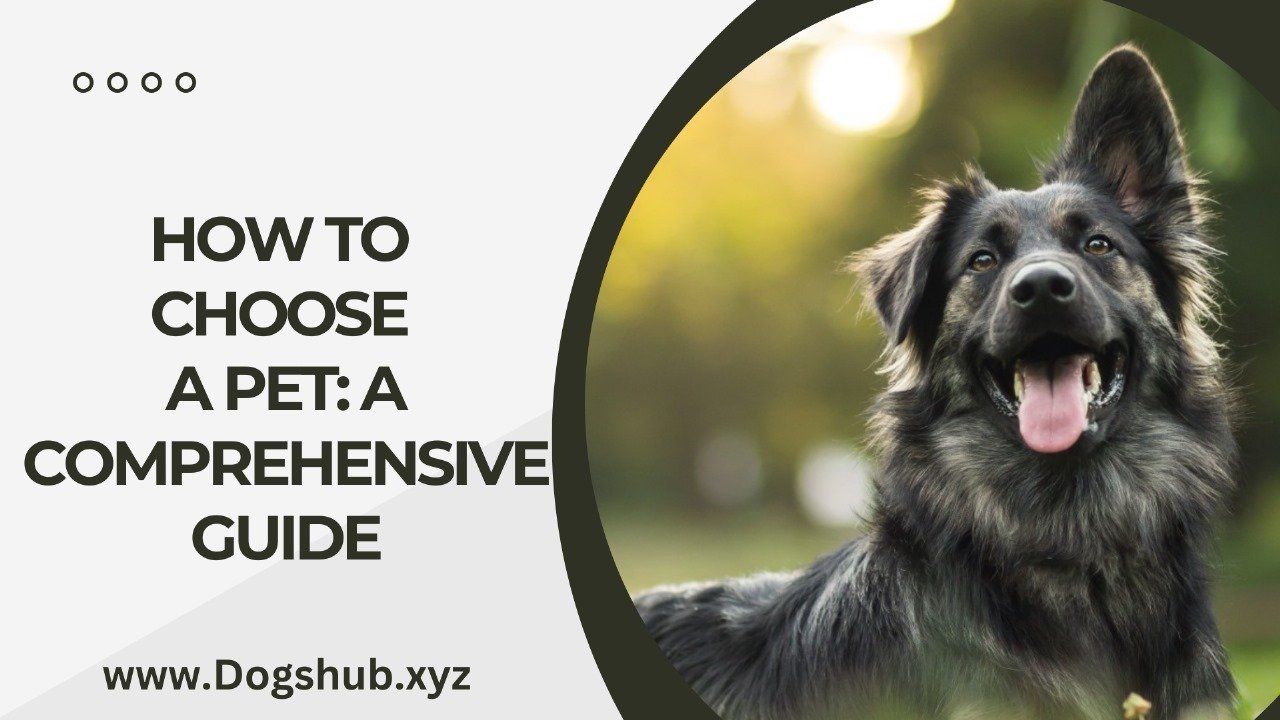The choice of a pet can be an important choice that will add joy and love to your daily life. But, it requires care to assure that your pet is compatible perfectly with your life as well as your living space as well as your personal tastes. This article will benefit you through the process choosing the right pet from looking at your requirements to comprehending what responsibilities pet ownership entails.
Understanding Your Lifestyle
Activity Level
The amount of exercise you provide can be a major factor picking the ideal pet.
- “High Activity” If you have an active lifestyle, and you enjoy outdoors activities, then a dog who is high-energy for example, the Border Collie or Labrador Retriever could be a great pair.
- low activity If you’d like an unhurried lifestyle you might consider adopting a pet that is less active for example, cats, small dog breed such as one like a French Bulldog, or a pet that is a fish, or bird.
Time Commitment
Pets with different needs require different levels of care and time.
- High commitment The majority of dogs require plenty of time for training or exercise as well as companionship. Dogs, particularly puppies require constant attention and interaction.
- Moderate commitment cats, though being more independent than dogs, require daily attention and social interaction.
- Low commitment such as reptiles, fish as well as small mammals such Guinea pigs and hamsters need lesser interaction on a daily basis, but require regular cleaning, feeding and care.
Living Condition
The environment you live in can greatly influence the type of pet best appropriate for your needs.
- The Apartment The smaller pets such as small dogs, cats and smaller mammals are usually better appropriate to live in apartments. Check if your property allows pets as well as consider noise and limitations on space.
- Home with yard Larger dogs or more active pets can benefit by having more space to play and run.
Consideration of health and allergy issues
If you or your family member is allergic, selecting the hypoallergenic pet species that is less likely to cause allergic reactions is vital.
- hypoallergenic breeds There are some breeds of cat and dog that are hypoallergenic, such as Poodles as well as Sphynx cats are classified as hypoallergenic.
- Alternative pets Fish, reptiles as well as birds are less likely to trigger allergic reactions than furry companions.
Financial Factors
The ownership of a pet comes with ongoing expenses for healthcare, food as well as grooming equipment.
- primary costs Think about the expense for purchasing or adopting a pet, medical initial care (vaccinations and spaying/neutering) and the first supplies (bed foods, toys and so on. ).
- Continuous Costs Consider the price of your regular meals as well as grooming and other ongoing cost.
- Emergencies ready yourself for medical emergencies that may arise. Pet insurance may benefit in reducing these costs.
Evaluation of Different Kinds of pets

Dogs
They are affectionate and loyal pet, but they also require the right amount of time, attention as well as attention.
- Pros Excellent for loyalty, good for protection and companionship Encourage an active life style.
- Pros require a lot of training, time and focus. It can be costly and might not be appropriate in all environments.
Cats
Cats are independent, and need less care than dogs, but nevertheless, they bring love and companionship.
- Pros: Independent, low-maintenance, suitable for smaller living spaces.
- Cons Cons: It can be difficult to find or require maintenance of litter boxes as well as cause allergic reactions.
Fish
Fish is a fantastic opportunity for people with only a limited amount of time and space they are a relaxing and attractive appearance.
- Pros low maintenance the quiet environment can be extremely relaxing.
- Cons Need certain tank conditions, periodic cleaning and surveillance of the quality of water.
Birds
Animals are often extremely friendly and intelligent pets. They impart the opportunity for companionship as well as entertainment.
- Pros: Social, intelligent, often long-lived.
- Cons The noise can be a nuisance need regular cage maintenance as well as social interactions.
Small Mammals
Small mammals, such as hamsters rabbits and guinea pigs can make excellent pets to those who want a low-maintenance pet.
- Pros generally low-maintenance, appropriate for small living areas, and suitable for young children.
- Pros A shorter lifespan requires regular cleaning of cages and is prone to being fragile.
Reptiles
Reptiles like snakes, lizards, or turtles make fascinating pets to those who are interested in unusual and non-flashy animals.
- Pros Hypoallergenic, low-maintenance distinctive and intriguing.
- Cons Requires specific environmental conditions and are difficult to deal with as well as have food requirements that may be difficult.
Adoption in contrast to. purchasing
Adoption
Adopting a pet at an animal shelter or rescue group could save lives and can be more cost effective as compared to buying the pet from breeders.
- Pros provides a place to a pet who is that is in desperate need. This can include the initial vet visit as well as being more cost-effective.
- Cons may have unidentified medical or behavioral problems and a limited selection of breeds and the ages.
The purchase of a breeder
When you purchase from a reliable breeder, it guarantees you a dog with a proven lineage and health background.
- Pros Health and behavior. Often, they include health-related guarantees.
- Cons Cons: Costlier and the potential to support unethical practices in breeding if not cautiously selected.
How to make up for The New Pet
Pet-Proofing Your Home
Prior to bringing your pet into your home, be sure the living area is secure and well-maintained.
- Eliminate Hazards Take care to secure or eliminate objects that may pose a risk including electrical cables as well as toxic plants and tiny objects that can be taken in.
- Create a safe space Create an area that your pet is safe particularly during the initial adjust period.
Essential Supplies
Get the right equipment before your pet’s arrival.
- Food and Water Bowls Pick durable, easily cleaned bowls.
- Bedding: Provide comfortable bedding appropriate for your pet.
- toys and Enrichment: Have an assortment of games to keep your pet busy and mentally active.
- Grooming Equipment Based on your pet’s breed, you could require grooming brushes, nail clippers along with other grooming tools.
- Healthcare Equipment Buy all necessary medicines, tick and flea prevention, as well as other health things.
Bonding the strong Bond
Learning and Socialization
Socialization and training are essential for establishing a solid connection with your pet, and ensure their wellbeing.
- Fundamental Commands Begin with the basics commands, and then gradually move to higher-level training.
- Socialization Experiment with exposing your pet as well as other pets to lessen the fear of aggression and aversion to.
Enjoying Time with Quality
Being able to spend time with your pet is a great way to strengthen your connection and adds to the happiness of your pet.
- Playtime Involve yourself in routine games and actions.
- Cuddling and Love Give your pet love by cuddling, petting, or speaking to them.
Conclusion
The choice of a pet can be an important decision, and requires thoughtful consideration of your needs as well as your living space as well as your preferences. If you are aware of the requirements and preferences of various types of pet and properly preparing for the arrival of your new pet it is possible to assure an easy transition as well as an enjoyable relationship with your new friend. Be aware that having a pet is an ongoing commitment that comes with both responsibility and benefits. Take pleasure in the process of possession and the love and love that a pet can bring to your home.




